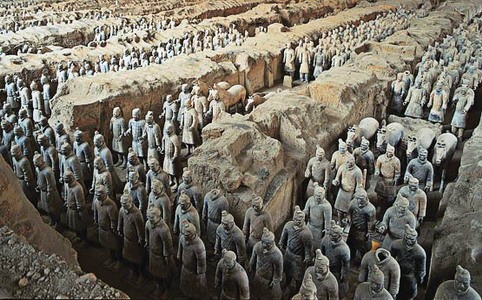Chinese archaeologists will continue working on the new excavation started on April 30, hoping to unearth terracotta warriors and horses at the mausoleum of China's first emperor, in Xi'an, Shaanxi Province, the Global Times reported.
An official in charge of the project at the Emperor Qin Shihuang's Mausoleum Site Museum has confirmed on May 4, Monday, that the archaeological team plans to excavate about 200 square meters of the No.2 pit, located near the burial pit of Emperor Qin Shihuang, founder of the Qin Dynasty (221-206 B.C.).
Archaeologist Yuan Zhongyi, former curator of the Museum of the Terracotta Warriors and Horses of Qin Shihuang, said on April 30 that the emperor's tomb is estimated to contain 1,400 clay figures and horses, 89 chariots and 116 cavalry horses.
Yuan added that the area has a large-scale army mixed with chariots, cavalry and archers.
Experts said that the excavation will provide more valuable material for research on the Qin Dynasty, especially on statuary art and its military system.
Liu Qingzhu, the academic director of the Institute of Archaeology at the Chinese Academy of Social Sciences, said that he was expecting to find more terracotta figures with other functions and new weapons in this excavation.
According to a report by the Chinese Business View, a Shaanxi-based newspaper, experts were also probing about the possible presence of "foreign soldiers," as one of the 121 skeletons found at the site in 2003 has DNA samples with alleged Eurasian Western features. This bolsters speculations that East Asia and Western Eurasian people mingled during the Qin Dynasty, even before the Silk Road route was established during the Han Dynasty.
The Xinhua News Agency reported that the team will use advanced technological tools such as digital scanning to collect data on the site and compare information in their database, which would enable them to build connections between artifacts and conduct multi-disciplinary evaluation.
The team stressed that the purpose of the excavation is to focus more on research about the terracotta warriors and horses as well as solve the academic questions about the artifacts.



























